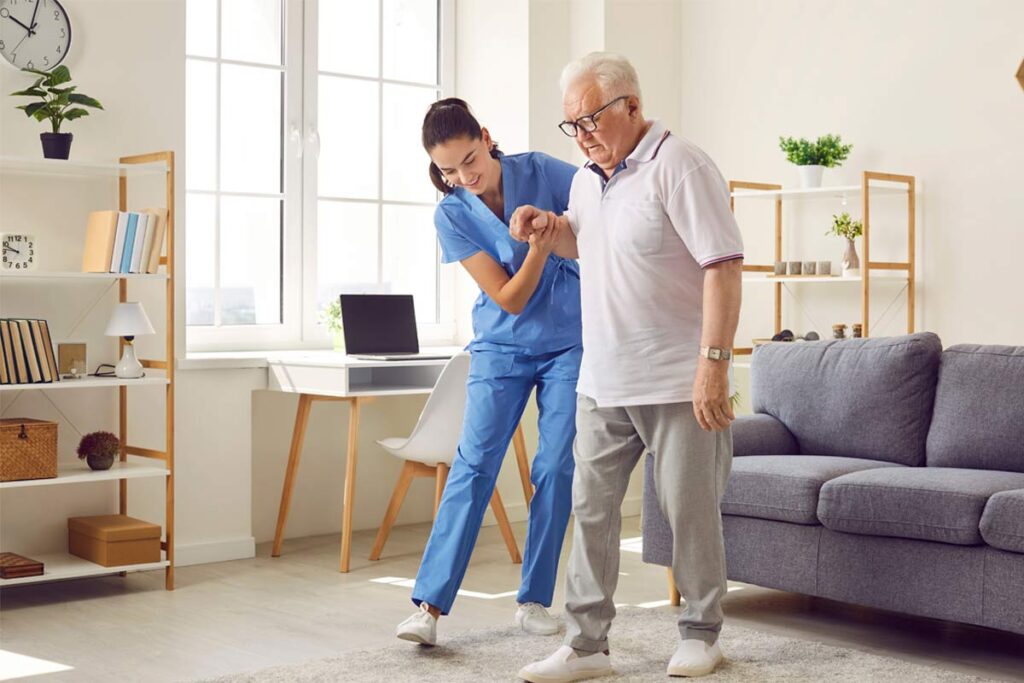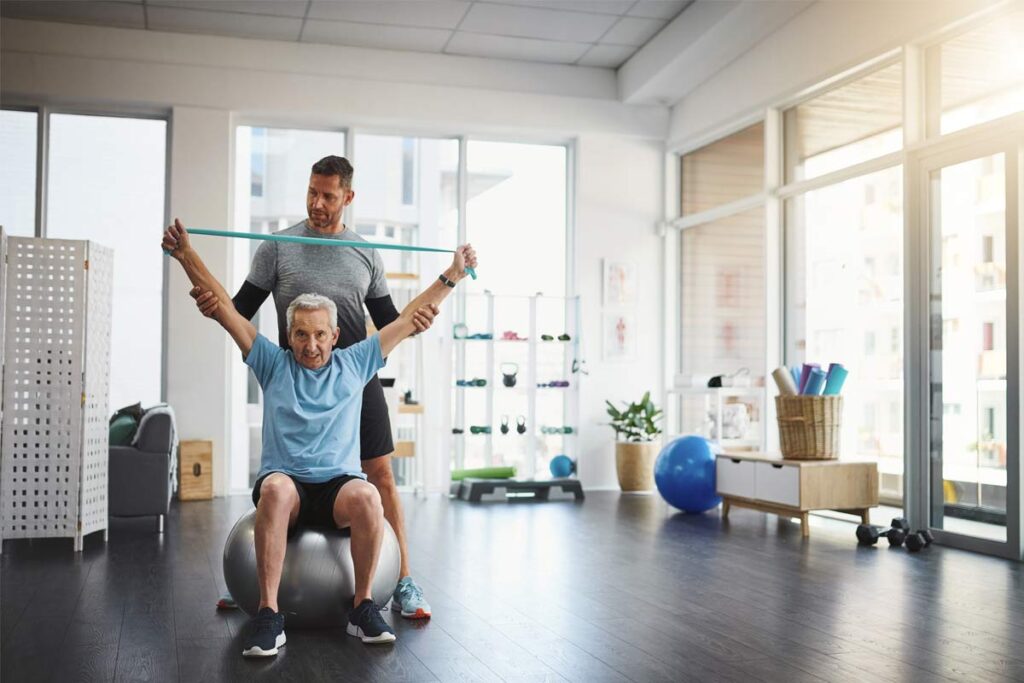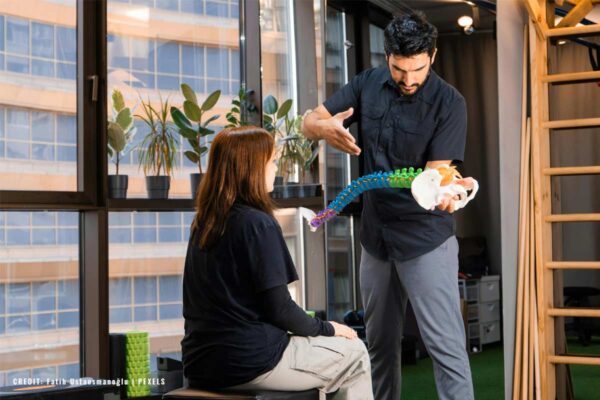How to Maintain Mobility as You Age with Physiotherapy
Mobility is an important part of daily life, especially as people get older. Moving with ease allows older adults to stay independent and continue enjoying their favourite activities. Physiotherapy can help seniors improve strength, flexibility, and balance, making movement easier and reducing the risk of injuries.
Many people notice changes in their mobility as they age, but these issues are not unavoidable. Muscle weakness, joint stiffness, and balance problems can make daily tasks more difficult. Understanding why mobility declines and how physiotherapy can help is the first step toward staying active and independent.
Why Mobility Declines with Age
As the body ages, physical changes affect movement and overall strength. Muscles naturally weaken, joints lose flexibility, and coordination may decrease. These changes can make daily tasks harder and increase the risk of falls.
While aging plays a role in mobility loss, other factors also contribute to the problem. Lack of physical activity, chronic conditions, and poor posture can make movement more difficult. Recognizing the causes of mobility decline can help people take action early and stay active for longer.
Common Causes of Reduced Mobility
- Muscle Weakness – Muscles lose mass and strength over time, which reduces endurance and stability. Without regular movement, this process speeds up, making walking and standing more difficult.
- Joint Stiffness – The cartilage in joints wears down with age, leading to stiffness and discomfort. This can make bending, reaching, and even getting up from a chair more challenging.
- Balance and Coordination Issues – Inner ear changes and weaker muscles affect coordination. As a result, people may feel unsteady on their feet, increasing the chance of falls.
- Chronic Conditions – Health issues such as arthritis, osteoporosis, and nerve-related disorders affect mobility. These conditions cause pain and stiffness, making movement more difficult over time.
- Sedentary Lifestyle – A lack of movement leads to muscle loss and decreased flexibility. Staying inactive for long periods can make it harder to regain mobility later on.
Early Signs of Mobility Decline
- Struggling with Daily Activities – Difficulty standing up, climbing stairs, or walking long distances may indicate a loss of strength. These signs suggest the need for movement-focused therapy.
- Increased Falls or Fear of Falling – Feeling unsteady or falling more often can signal reduced balance and coordination. Many older adults become hesitant to move, which worsens mobility issues.
- Joint Stiffness After Inactivity – Waking up with stiff joints or feeling discomfort after sitting for long periods may indicate reduced flexibility. Regular movement can help loosen stiff joints and improve mobility.
- Changes in Posture or Walking Speed – Slower movements or a hunched posture may suggest muscle weakness. These changes can put extra strain on joints, making movement more difficult.
How Physiotherapy Supports Mobility in Older Adults

Physiotherapy provides structured exercises and treatments to help older adults move more comfortably. These exercises focus on building strength, improving balance, and relieving joint pain. A physiotherapist designs a personalized plan based on individual needs.
Staying mobile helps maintain independence and reduces the risk of injuries. By focusing on strength, flexibility, and pain relief, physiotherapy allows seniors to continue their daily activities. Regular sessions can lead to noticeable improvements in movement and overall well-being.
- Strength and Endurance Training
Physiotherapists use resistance exercises to help rebuild muscle strength and improve stamina. Stronger muscles make everyday activities like standing, walking, and lifting easier. Endurance training also helps prevent fatigue, allowing seniors to stay active for longer periods. Over time, these exercises enhance overall mobility and improve energy levels.
- Balance and Fall Prevention Exercises
Balance exercises focus on strengthening the muscles that support stability and coordination. These movements help seniors feel more secure when walking or standing, reducing the risk of falling. Improved balance also increases confidence, making it easier to move without fear. By practicing these exercises regularly, seniors can maintain independence and avoid fall-related injuries.
- Flexibility and Range of Motion Workouts
Stretching exercises keep joints flexible and prevent stiffness from limiting movement. Regular stretching makes it easier to bend, reach, and turn without discomfort. These exercises also help reduce tension in the muscles, which can improve overall mobility. By maintaining flexibility, seniors can move more freely and reduce strain on their joints.
- Pain Management Techniques
Physiotherapists use treatments such as manual therapy, ultrasound, and heat or cold therapy to manage pain. These methods reduce swelling and improve blood flow, which helps with healing. Less pain makes it easier to perform daily activities without discomfort. Managing pain effectively also decreases the need for medication, allowing for more natural relief.
- Gait and Posture Correction
Physiotherapists assess walking patterns and posture to identify movement issues. Poor posture can strain muscles and joints, leading to discomfort and instability. Adjusting the way a person moves helps distribute weight evenly and prevents unnecessary pressure on certain areas. Improving gait and posture makes walking and standing more comfortable and stable.
Essential Physiotherapy Exercises for Mobility Maintenance
Regular exercises play a key role in maintaining strength and flexibility. These exercises target different muscle groups to support everyday movements. Doing them consistently can improve stability and reduce the risk of falls.
A combination of lower body, upper body, and core exercises helps maintain overall mobility. Physiotherapists recommend safe and effective movements based on individual abilities. Below are some key exercises that support mobility as people age.
Lower Body Strengthening
- Seated Leg Lifts – Sitting in a chair, lift one leg at a time to strengthen the quadriceps and hip muscles. This improves walking stability and makes standing easier.
- Heel and Toe Raises – Standing with support, rise onto the toes and then lower onto the heels. This exercise strengthens the ankles and improves balance.
Upper Body Mobility and Strength
- Seated Shoulder Press – Holding light weights, press arms upward to strengthen shoulder and arm muscles. This helps with lifting objects and maintaining upper body mobility.
- Arm Circles and Stretches – Extending and rotating the arms keeps the shoulders flexible. Regular stretching reduces stiffness and improves reach.
Core Stability Workouts
- Seated Abdominal Contractions – Tightening the abdominal muscles while sitting helps improve posture. A strong core reduces back strain and supports better balance.
Balance and Coordination Drills
- Tandem Walking – Walking heel-to-toe in a straight line improves foot positioning and stability. This drill helps with coordination and balance control.
- Single-Leg Stance – Standing on one leg for a few seconds builds balance and reduces fall risks. Over time, this exercise strengthens the lower body.
Common Myths About Aging and Mobility
Many people believe that mobility naturally declines with age, but this is not always true. Certain lifestyle habits and exercise routines can help maintain movement. Physiotherapy offers structured programs to slow mobility loss.
Misconceptions about aging and exercise often discourage people from staying active. Understanding the facts can help older adults take control of their mobility. Below are common myths and the truth behind them.
Myth 1: Mobility Decline Is Inevitable with Age
Aging can affect muscle strength and joint flexibility, but mobility loss is not guaranteed. Regular exercise helps maintain movement and prevents the stiffness that often comes with aging. Physiotherapy focuses on strengthening muscles, improving balance, and keeping joints healthy. Many seniors who follow a structured exercise routine continue to move comfortably and stay independent.
Myth 2: Exercise Is Too Risky for Older Adults
Some people believe that exercise is dangerous for seniors, but movement is essential for maintaining mobility. Physiotherapists design low-impact exercises that match each person’s fitness level to prevent injury or strain. Strength training, balance exercises, and stretching all support safe and controlled movement. With the right guidance, seniors can exercise confidently and improve their overall well-being.
Myth 3: Joint Pain Means You Should Avoid Movement
Pain can make movement uncomfortable, but avoiding activity often makes joint issues worse. Gentle exercises improve blood circulation, which helps reduce stiffness and supports healing. Strengthening the muscles around the joints provides better support and reduces strain. Physiotherapy offers safe ways to stay active while managing discomfort effectively.
Stay Active and Mobile with Physiotherapy

Staying mobile is possible with the right exercises and proper guidance from a physiotherapist. Engaging in targeted movements helps strengthen muscles, improve coordination, and maintain joint flexibility. These improvements make walking, standing, and other daily activities easier and more comfortable. With consistent physiotherapy sessions, seniors can move with greater ease and experience less discomfort.
Age-related mobility issues do not have to take away independence or limit daily activities. Taking proactive steps, such as maintaining an active lifestyle and following a structured physiotherapy plan, helps prevent stiffness and muscle weakness. Regular movement supports joint health and reduces the risk of falls, allowing seniors to feel more secure in their mobility. By staying committed to their physical well-being, older adults can continue to enjoy their routines with confidence and freedom.
Improve Mobility with Physio in Scarborough at PARC of Ontario
Mobility support goes beyond exercise—therapeutic massage can also play a key role. At PARC of Ontario, physio in Scarborough helps seniors reduce muscle tension, improve circulation, and maintain flexibility. Regular physiotherapy session can help ease discomfort and improve overall movement.
Whether you want to relieve joint stiffness or improve your range of motion, physiotherapy offers a natural way to support mobility. Taking care of your body today can lead to greater ease of movement in the future. Call us today at (416) 430-0314 to book a session and take an active step toward staying mobile and independent.





